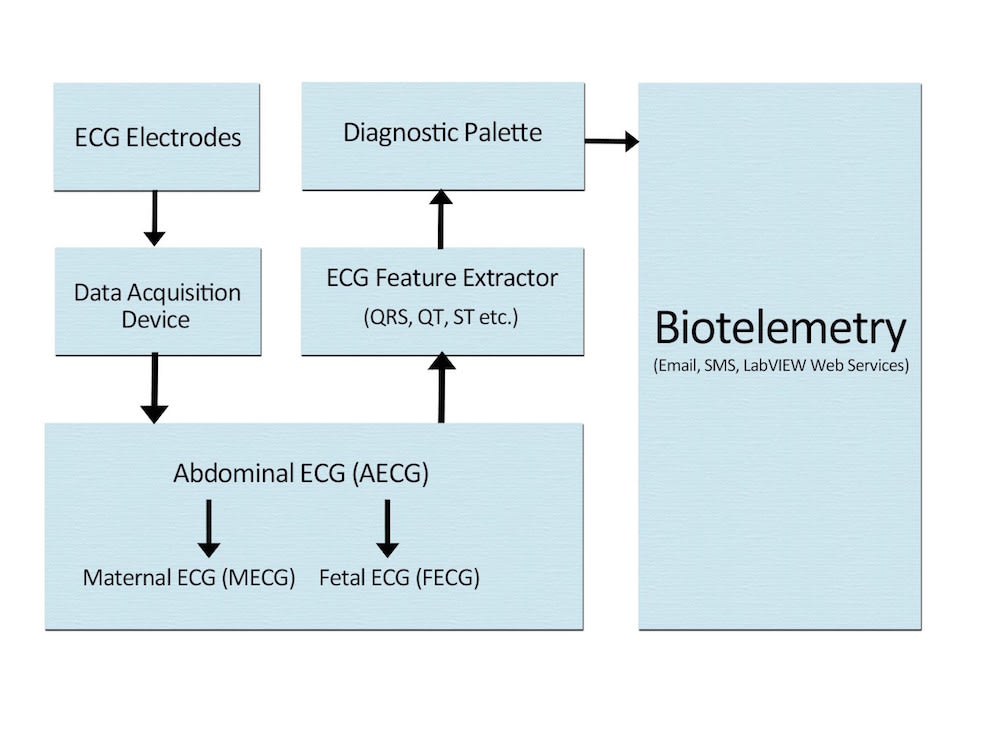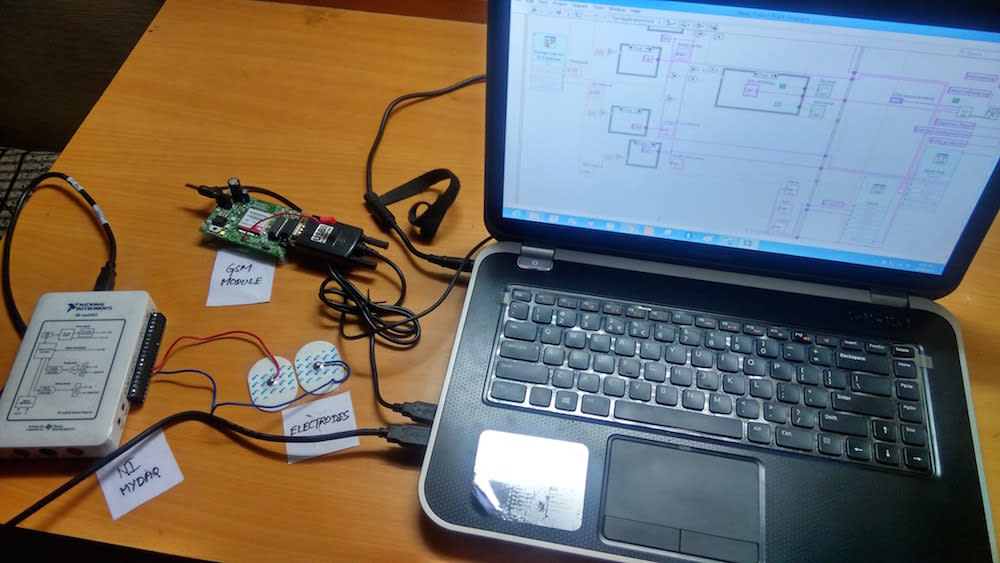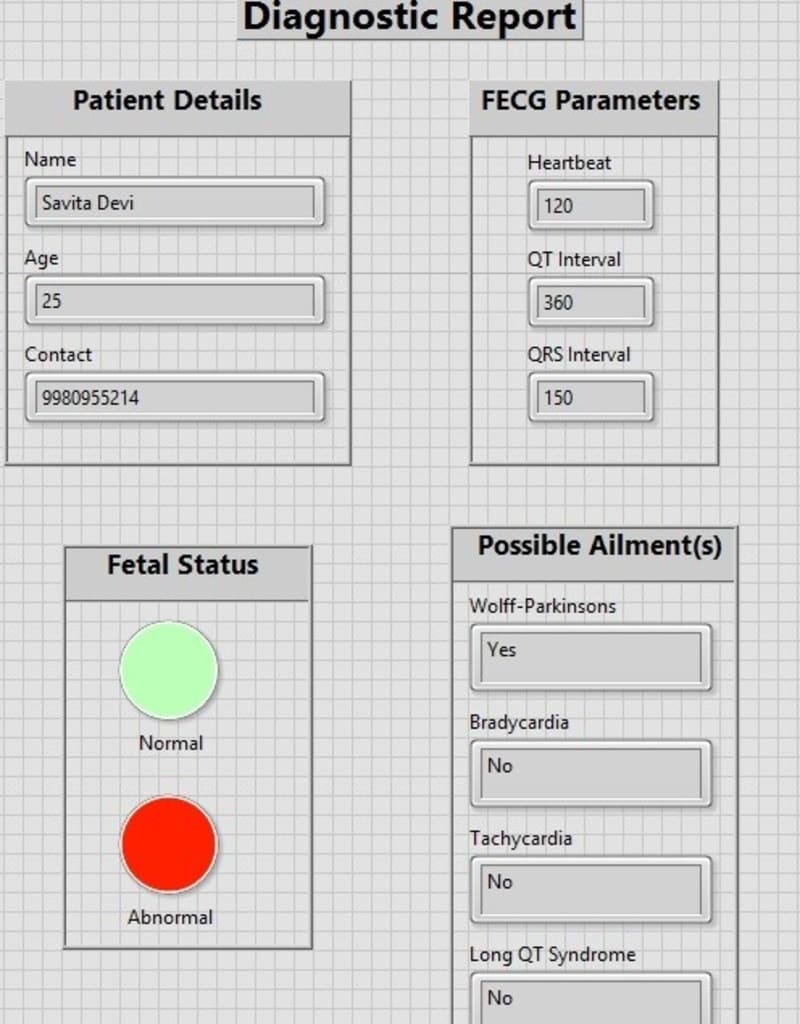
833.5 million or about two-thirds of the Indian population still live in rural areas which are mostly devoid of sophisticated medical technologies accessible by their urban counterparts. Unlike cities, the process of childbirth and other pregnancy-related issues are largely handled by midwives which are often not accurate. Thus there is no foolproof method to check the health of the fetus. Pertaining to this problem, we propose a Smart Fetal ECG (FECG) Acquisition and Analysis System –SFAAS.
The main objective of SFAAS is developing fully robust, automatic ECG equipment which can acquire an ECG from the abdomen of a pregnant woman and separate the convoluted mixtures obtained indicating the defects in the ECG recording, thus showing the health of the fetus through NI LabVIEW. The convoluted mixture of MECG and FECG signals were separated and filtered using adaptive filtering algorithms like LMS (Least Mean Square) to remove the baseline wandering, powerline interference, EMG noise, patient–electrode motion artifacts and contact noise. These recordings can then be transferred to the nearest health center via an automated generated email for immediate treatment and diagnosis. An auto-generated SMS is also generated in indicate the status of the fetus to the particular patient.
In our proposed system, abdominal surface electrodes are being used to acquire the FECG. This is achieved by placing the electrodes on the abdomen of the pregnant woman The abdominal ECG (AECG) consists of the convoluted mixture of Maternal ECG (MECG) and Fetal ECG (FECG) which is separated from a .lvm file saved from Physionet database. Here in the .vi file, the entire process is systematically segmented through the LabVIEW Event Structure.The next step is to filter the ECG signals for the different kinds of noises. Among them, baseline wandering and powerline interference are the most significant ones. In our approach, we are using the adaptive LMS filter noise filtering and improved detection of the QRS complex.They use a gradient descent method in which the filter coefficients are constantly updated based on the instantaneous error signal. Based on this, a filter length of 40 and step size of 0.45 is created from which the filtered ECG signals are produced for further analysis of the QRS complex. The filtered FECG waveform is then converted into a .tdms file for feature extraction using LabVIEW Biomedical Toolkit. It analyzes the FECG and produces features such as QRS amplitude, QRS width, ST level, PR interval, QT interval and heart rate. Based on these parameters diseases such as Long QT, Bradycardia, Tachycardia, Wolff Parkinsons disease can be detected. The email VI uses .NET connectivity tools of NI LabView to set up SMTP client server access using telnet services of the system with port 587 and and SSL encryption standard. For generating SMS we have used GSM module to interface with NI LabView using a RS232-USB connector and NI VISA serial resources. Though this system is in a simulation stage now it can be used as a product using any NI Analog DAQ input module.
-
Awards
-
 2015 Top 100 Entries
2015 Top 100 Entries
Like this entry?
-
About the Entrant
- Name:Apratim Halder
- Type of entry:teamTeam members:APRATIM HALDER, RAHUL SHARMA, AMIT BARAN ROY
- Software used for this entry:National Instruments LABVIEW
- Patent status:none








